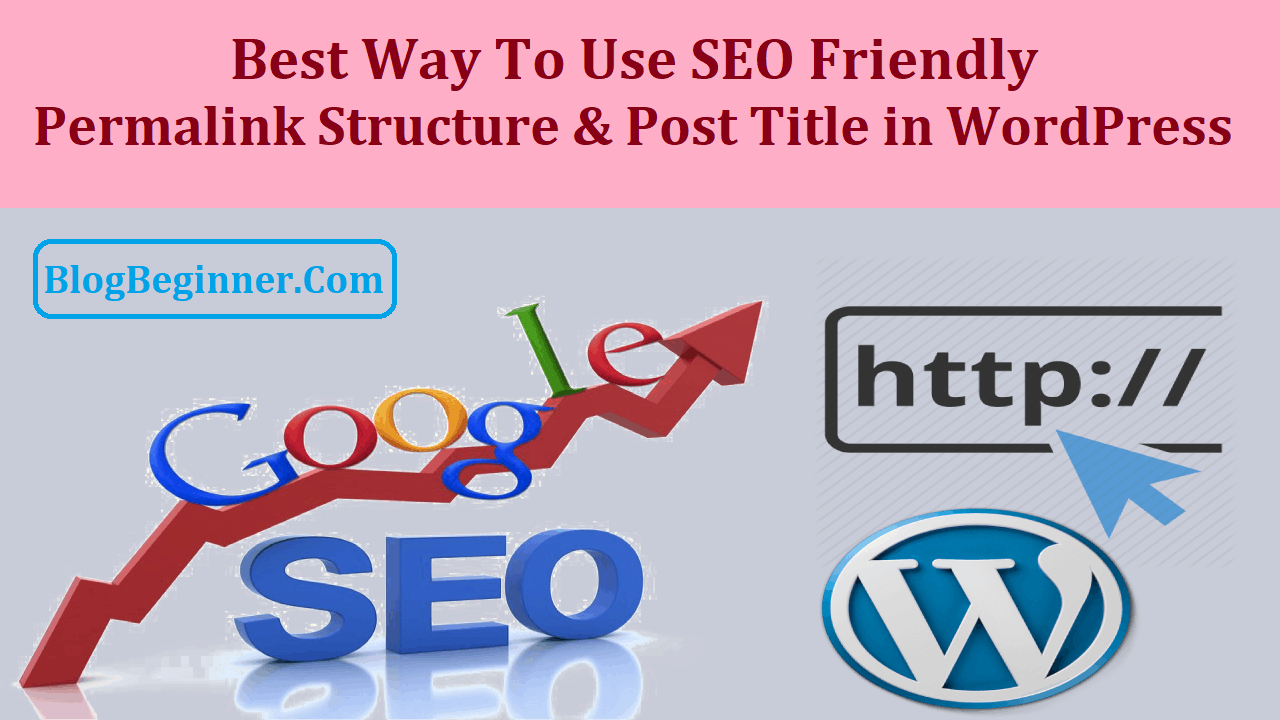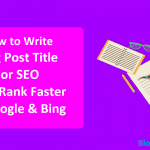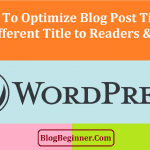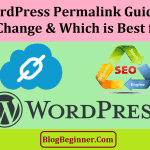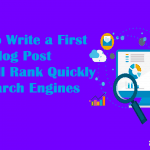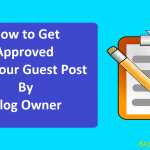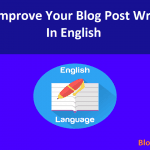Contents In Page
What in the World Is a Permalink?
If you’re new to SEO (or WordPress), you’re probably thinking, “What the hell is a permalink?”
Great question. Permalink is short for “permanent link.” It’s a URL that’s supposed to stay, well, permanent or the same for years and years to come. Most permalinks are simple, friendly, and easy to remember or type.
So, now that that’s out of the way, you’ve probably never even thought about the permalinks of old posts in your blog. That’s where you’re making a mistake.
In this article, you will learn how to use WordPress post permalink & post title combination for SEO.
A Brief Overview of How to Rank in Search Engines.
In content marketing, people are so engaged in creating the perfect title for each article, writing specific word counts, or hitting certain keyword densities, that they completely forget about the importance of permalinks in SEO and ranking.
The thing is, all search engines create caches of each post or page published on every blog.
Sure, you already know that the most important thing to rank higher in search results is to make sure you write great content, and you also know that different search engines have their own ways of ranking pages on certain keywords, but those aren’t the only factors you should be considering.
In order to rank high, you should consider everything at play and excel in each and every one of them.
All the search engines, when generating search results, highlight the key phrases or words searched for.
That means Google, Bing, Yandex, and every other search engine pay close attention to description, title, and, of course, the page URL.
If you want to rank for certain keywords, you’d naturally want to match the keywords searched to the keywords in your posts.
To do this, you should optimize these three primary factors in your website, page, or blog, namely: the title, the description, and the URL.
The title is obviously what the page or post is called. During the writing process, titles are usually the first headlines or the h1 tags. In search engine language, h1 tags matter the most when generating results of particular keywords.
Second, the description is the bundle of words just right under the title in a result snippet. If you’re wondering how the description is generated, they’re often the first lines of the page’s content.
Some content writers or bloggers use plugins to specify what kind of description they’d want to show on the search snippets.
However, in Google’s algorithms, descriptions you wrote yourself using a plugin won’t always show in the results.
They take these custom descriptions into account, but Google still has the ultimate decision on whether they’d use it as a meta description for the search results or not.
Finally, the URL can be seen below the meta description. URLs are unique and very important elements in search engine optimization.
Google’s algorithms take into account a page’s link or URL, so it’s important to also take it into account when setting up keywords for custom URLs, especially in permalinks.
Advantages of Well-Optimized Permalinks
If you’re a writer through and through, you probably have all these creative ideas for titles—titles you think would attract readers’ attention.
But, let’s face it: If your so-called creative titles don’t contain important keywords or key phrases that people are searching for, then there go your post’s chances of getting a higher rank and therefore getting seen and read by people.
Isn’t that the point of writing all these articles anyway?
So that people could read them?
Thankfully, there are permalinks you can stuff those keywords to, and you can do whatever creative mojo you want with the title.
If having a creative title isn’t much of a priority for you, then one trick you can do with the optimization is use different, but related, keywords for the permalink and title.
By modifying the structure of the permalink and using different keywords for it from the title, it allows you to tag more keywords as your post appears in the search results.
More importantly, as you gain more and more traffic, the more this technique benefits your site or blog.
Before You Publish That Post
With all these things in mind about optimizing your post’s title, description, and URL, make sure that you remember to check these three things before you publish your articles.
First of all, simplicity is key. Always remember this age-old adage when writing your title. It is what people see first and what they use to generate a first impression.
Second, descriptions are useful for more longtail keywords, so make sure your descriptions are always informational and unique for each post or page.
Third, take advantage of not using the exact same key words for your title and permalink.
But, remember that you should also keep a healthy keyword density for all three aspects.
SEO can be tricky at first, but like all things, it can be learned and mastered.
How to Use WordPress Post Permalink & Post Title Combination for SEO
Most people ignore their page’s permalinks completely and choose to focus on the title, but while the post title is important, it’s not everything.
One good reason to modify permalinks is so you can include every possible keyword in the permalink and therefore make your post title shorter.
However, you shouldn’t limit yourself in keeping post titles short, because it could be the other way around, and you could keep your post titles long and your permalinks short. It’s all up to you, as long as you make sure that you use the right keywords for both your permalinks and post titles.
What’s the Perfect Permalink Structure for WordPress SEO?
Common questions regarding the structure of posts’ URLs or permalink include, “How long should my slugs be?” and “Should I put the post’s category in the permalink structure?”
This section of the article addresses the frequently asked questions on permalink structure.
Frequently Asked Questions:
-
What’s the ideal URL structure for best SEO?
The ideal structure should be something clear and simple. Preferably, the URL should end with the title of the post, and if you think you want to add more, you could put the category of the post before the title. Additionally, your post title should also contain the main keyword.
-
Should I add dates to my permalink structure?
Adding dates to your URLs won’t benefit your SEO score significantly. In the case where it benefits your SEO performance, adding dates to permalinks means showing the searchers how updated each of your posts are. Some people check these dates and would most likely read the ones that are more recent or updated.On the other hand, if you write a lot of content and don’t have a lot of time updating each one you’ve written, dates on permalinks could be disadvantageous. Some of your older posts might even have valuable information that holds true through time, and just because the date on its permalink isn’t as recent as others, it won’t get as much clicks as it deserves.
-
How about categories?
As mentioned in the answer to question 1, this is entirely your prerogative.If your category names are short and simple, it wouldn’t be much of a problem adding them to your permalink structure, but for more lengthy category names, and you still choose to add them to your permalink structure, you’d end up with an equally lengthy URL that would be very difficult to share throughout different media. Besides, they won’t add value to your Google search rankings anyway.
Moreover, if you add categories to permalink structures, make sure each post has only one category. This is to avoid confusion and to make archiving your posts more organized.
-
Is adding an .html extension to my permalinks helpful?
When it comes to search engine ranking and optimization, there’s actually little to no benefit in having an .html extension to your URLs. Sure, there might be advantages, but that’s for a whole new different topic.Long story short, unless you’re a developer who knows what you’re doing, don’t add the .html extension. It won’t be helpful for your SEO. As a matter of fact, adding extensions like .exe might even hurt your search engine rankings.
-
Should I put numbers in my URLs if my content is about news?
The answer is no. Years ago, if you wanted your articles to be indexed in Google News, having numbers in your post’s URL was a requirement, and to do this, you’d need to have an XML sitemap that’s separate. However, Google’s September 2015 update removed this requirement, so you no longer need a sitemap or a unique number for your URLs.
-
Should I always put my main keywords on the very first part of my URL?
It would be helpful, yes, but as long as it’s in the front or first part and it’s visible in the snippet preview, it wouldn’t be a problem.
-
Is there an ideal word count for modifying a slug?
Three to five words would be optimal. Apparently, longer slugs get weighted less by Google’s algorithms. So, if you have a title that’s more than 5 words, you should really consider modifying your slug.
-
Should I always change my URL structure?
The answer is not an immediate yes. If you have been writing or blogging for a long time now, you shouldn’t change it right away. If your permalink structure contains dates and you’ve been doing this for years, it’s probably not a good idea to just take them off, but if you’re only just starting, you can switch to a different permalink structure without any drastic changes to your rankings or audience.However, if you’ve been using the old URL versions all this time, then you should modify your permalink structure, even if you’ve been writing or blogging for quite some time now. It would improve your site’s potential to rank higher in the Google search results.
You should note, however, that when you change your permalinks, you should always test them in staging environments.
-
What’s the perfect URL for SEO?
Overall, as long as you properly set your site’s permalink structure before writing posts, you’ll be fine.
- And if you make a decision to modify the permalink structure some time in the future, just make sure you redirect your readers to your new URLs.
Tips for Creating Better Permalink Structures
These are additional tips to help your posts and pages rank better in Google search results through your permalinks.
Make Your Permalink Structure Short
When it comes to SEO, shorter URLs are better than longer ones. Ideally, the length of URLs should be under one hundred characters, and some studies even suggest that they should be shorter.
One study in particular observed that the average URL length for top ranking results in Google are around 50 to 59 characters long.
Remove Your Permalink’s “www”
In search results, Google shortens URLs to 512 px or 54-60 characters. That means you should avoid your URLs being shortened as much as possible, and you could do this by removing the “www” in each web address.
If you’re wondering how to do this, you can easily dispatch of the “www,” even the dot, by deleting them from each URL under the general section of your WordPress settings. After this, don’t forget to notify google via the Search Console.
Set Up a Good Slug
Slugs, often your page titles, are the part of your URLs that come after the domain name.
They are the lines that come right after the “.com” or “.net” part of your URL. As a general rule, you should limit the length of the slug to 4 or 5 words.
WordPress can create your slug for you, but this isn’t recommended because WordPress-generated slugs are usually full of stop words.
Examples of stop words include with, a, was, and, the, is, or, on, and of. Search engines are designed to ignore them since stop words don’t really add much detail to the topics.
So, you should always edit your post’s slugs. Some WordPress plugins help you with this.
